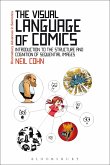Ferdinand de Saussure
Course in General Linguistics
Herausgeber: Saussy, Haun; Meisel, Perry / Übersetzer: Baskin, Wade
Ferdinand de Saussure
Course in General Linguistics
Herausgeber: Saussy, Haun; Meisel, Perry / Übersetzer: Baskin, Wade
- Broschiertes Buch
- Merkliste
- Auf die Merkliste
- Bewerten Bewerten
- Teilen
- Produkt teilen
- Produkterinnerung
- Produkterinnerung
This is the first critical edition of Course in General Linguistics to appear in English and restores Wade Baskin's original translation of 1959, in which the terms "signifier" and "signified" are introduced into English in this precise way.
Andere Kunden interessierten sich auch für
![Course in General Linguistics Course in General Linguistics]() Ferdinand de SaussureCourse in General Linguistics18,99 €
Ferdinand de SaussureCourse in General Linguistics18,99 €![Why Is This a Question? Why Is This a Question?]() Paul Anthony JonesWhy Is This a Question?9,99 €
Paul Anthony JonesWhy Is This a Question?9,99 €![Why Is This a Question? Why Is This a Question?]() Paul Anthony JonesWhy Is This a Question?21,99 €
Paul Anthony JonesWhy Is This a Question?21,99 €![The Visual Language of Comics The Visual Language of Comics]() Dr Neil Cohn (The Netherlands Tilburg University)The Visual Language of Comics27,99 €
Dr Neil Cohn (The Netherlands Tilburg University)The Visual Language of Comics27,99 €![The Dictionary People The Dictionary People]() Sarah OgilvieThe Dictionary People32,99 €
Sarah OgilvieThe Dictionary People32,99 €![Discourse Analysis Discourse Analysis]() Rodney H. JonesDiscourse Analysis35,99 €
Rodney H. JonesDiscourse Analysis35,99 €![Semantics Semantics]() John I. Saeed (Dublin Trinity College)Semantics41,99 €
John I. Saeed (Dublin Trinity College)Semantics41,99 €-
-
-
This is the first critical edition of Course in General Linguistics to appear in English and restores Wade Baskin's original translation of 1959, in which the terms "signifier" and "signified" are introduced into English in this precise way.
Produktdetails
- Produktdetails
- Verlag: Columbia University Press
- Seitenzahl: 336
- Erscheinungstermin: 28. Juni 2011
- Englisch
- Abmessung: 201mm x 134mm x 20mm
- Gewicht: 394g
- ISBN-13: 9780231157278
- ISBN-10: 0231157274
- Artikelnr.: 32832835
- Herstellerkennzeichnung
- Libri GmbH
- Europaallee 1
- 36244 Bad Hersfeld
- gpsr@libri.de
- Verlag: Columbia University Press
- Seitenzahl: 336
- Erscheinungstermin: 28. Juni 2011
- Englisch
- Abmessung: 201mm x 134mm x 20mm
- Gewicht: 394g
- ISBN-13: 9780231157278
- ISBN-10: 0231157274
- Artikelnr.: 32832835
- Herstellerkennzeichnung
- Libri GmbH
- Europaallee 1
- 36244 Bad Hersfeld
- gpsr@libri.de
Ferdinand de Saussure. Translated by Wade Baskin. Edited by Perry Meisel and Haun Saussy
Editors' Preface and Acknowledgments
Textual Note
Introduction: Saussure and His Contexts
Course in General Linguistics
Translator's Introduction
Preface to the First Edition
Introduction
Chapter I. A Glance at the History of Linguistics
Chapter II. Subject Matter and Scope of Linguistics; Its Relations with
Other Sciences
Chapter III. The Object of Linguistics
Chapter IV. Linguistics of Language and Linguists of Speaking
Chapter V. Internal and External Elements of Language
Chapter VI. Graphic Representation of Language
Chapter VII. Phonology
Appendix: Principles of Phonology
Chapter I. Phonological Species
Chapter II. Phonemes in the Spoken Chain
Part One: General Principles
Chapter I. Nature of the Linguistic Sign
Chapter II. Immutability and Mutability of the Sign
Chapter III. Static and Evolutionary Linguistics
Part Two: Synchronic Linguistics
Chapter I. Generalities
Chapter II. The Concrete Entities of Language
Chapter III. Identities, Realities, Values
Chapter IV. Linguistic Value
Chapter V. Syntagmatic and Associative Relations
Chapter VI. Mechanism of Language
Chapter VII. Grammar and Its Subdivisions
Chapter VIII. Role of Abstract Entities in Grammar
Part Three: Diachronic Linguistics
Chapter I. Generalities
Chapter II. Phonetic Changes
Chapter III. Grammatical Consequences of Phonetic Evolution
Chapter IV. Analogy
Chapter V. Analogy and Evolution
Chapter VI. Folk Etymology
Chapter VII. Agglutination
Chapter VIII. Diachronic Unites, Identities, and Realities
Appendices to Parts Three and Four
Part Four: Geographical Linguistics
Chapter I. Concerning the Diversity of Languages
Chapter II. Complication of Geographical Diversity
Chapter III. Causes of Geographical Diversity
Chapter IV. Spread of Linguistic Waves
Part Five: Concerning Retrospective Linguistics
Chapter I. The Two Perspectives of Diachronic Linguistics
Chapter II. The Oldest Language at the Prototype
Chapter III. Reconstructions
Chapter IV. The Contribution of Language to Anthropology and Prehistory
Chapter V. Language Families and Linguistic Types
Errata
Notes
Works Cited
Index
Textual Note
Introduction: Saussure and His Contexts
Course in General Linguistics
Translator's Introduction
Preface to the First Edition
Introduction
Chapter I. A Glance at the History of Linguistics
Chapter II. Subject Matter and Scope of Linguistics; Its Relations with
Other Sciences
Chapter III. The Object of Linguistics
Chapter IV. Linguistics of Language and Linguists of Speaking
Chapter V. Internal and External Elements of Language
Chapter VI. Graphic Representation of Language
Chapter VII. Phonology
Appendix: Principles of Phonology
Chapter I. Phonological Species
Chapter II. Phonemes in the Spoken Chain
Part One: General Principles
Chapter I. Nature of the Linguistic Sign
Chapter II. Immutability and Mutability of the Sign
Chapter III. Static and Evolutionary Linguistics
Part Two: Synchronic Linguistics
Chapter I. Generalities
Chapter II. The Concrete Entities of Language
Chapter III. Identities, Realities, Values
Chapter IV. Linguistic Value
Chapter V. Syntagmatic and Associative Relations
Chapter VI. Mechanism of Language
Chapter VII. Grammar and Its Subdivisions
Chapter VIII. Role of Abstract Entities in Grammar
Part Three: Diachronic Linguistics
Chapter I. Generalities
Chapter II. Phonetic Changes
Chapter III. Grammatical Consequences of Phonetic Evolution
Chapter IV. Analogy
Chapter V. Analogy and Evolution
Chapter VI. Folk Etymology
Chapter VII. Agglutination
Chapter VIII. Diachronic Unites, Identities, and Realities
Appendices to Parts Three and Four
Part Four: Geographical Linguistics
Chapter I. Concerning the Diversity of Languages
Chapter II. Complication of Geographical Diversity
Chapter III. Causes of Geographical Diversity
Chapter IV. Spread of Linguistic Waves
Part Five: Concerning Retrospective Linguistics
Chapter I. The Two Perspectives of Diachronic Linguistics
Chapter II. The Oldest Language at the Prototype
Chapter III. Reconstructions
Chapter IV. The Contribution of Language to Anthropology and Prehistory
Chapter V. Language Families and Linguistic Types
Errata
Notes
Works Cited
Index
Introduction to the Bloomsbury Revelations Edition
Preface to the First Edition
Preface to the Second Edition
Preface to the Third Edition
Editor's Introduction, Roy Harris
Introduction
1. A Brief Survey of the History of Linguistics
2. Data and Aims of Linguistics: Connexions with Related Sciences
3. The Object of Study
4. Linguistics of Language Structure and Linguistics of Speech
5. Internal and External Elements of a Language
6. Representation of a Language by Writing
7. Physiological Phonetics
Appendix: Principles of Physiological Phonetics
1. Sound Types
2. Sounds in Spoken Sequences
Part One: General Principles
1. Nature of the Linguistic Sign
2. Invariability and Variability of the Sign
3. Static Linguistics and Evolutionary Linguistics
Part Two: Synchronic Linguistics
1. General Observations
2. Concrete Entities of a Language
3. Identities, Realities, Values
4. Linguistic Value
5. Syntagmatic Relations and Associative Relations
6. The Language Mechanism
7. Grammar and Its Subdivisions
8. Abstract Entities in Grammar
Part Three: Diachronic Linguistics
1. General Observations
2. Sound Changes
3. Grammatical Consequences of Phonetic Evolution
4. Analogy
5. Analogy and Evolution
6. Popular Etymology
7. Agglutination
8. Diachronic Units,Identities and Realities
Appendices
Part Four: Geographical Linguistics
1. On the Diversity of Languages
2. Geographical Diversity: Its Complexity
3. Causes of Geographical Diversity
4. Propagation of Linguistic Waves
Part Five: Questions of Retrospective Linguistics Conclusion
1. The Two Perspectives of Diachronic Linguistics
2. Earliest Languages and Prototypes
3. Reconstructions
4. Linguistic Evidence in Anthropology and Prehistory
5. Language Families and Linguistic Types
Index
Preface to the First Edition
Preface to the Second Edition
Preface to the Third Edition
Editor's Introduction, Roy Harris
Introduction
1. A Brief Survey of the History of Linguistics
2. Data and Aims of Linguistics: Connexions with Related Sciences
3. The Object of Study
4. Linguistics of Language Structure and Linguistics of Speech
5. Internal and External Elements of a Language
6. Representation of a Language by Writing
7. Physiological Phonetics
Appendix: Principles of Physiological Phonetics
1. Sound Types
2. Sounds in Spoken Sequences
Part One: General Principles
1. Nature of the Linguistic Sign
2. Invariability and Variability of the Sign
3. Static Linguistics and Evolutionary Linguistics
Part Two: Synchronic Linguistics
1. General Observations
2. Concrete Entities of a Language
3. Identities, Realities, Values
4. Linguistic Value
5. Syntagmatic Relations and Associative Relations
6. The Language Mechanism
7. Grammar and Its Subdivisions
8. Abstract Entities in Grammar
Part Three: Diachronic Linguistics
1. General Observations
2. Sound Changes
3. Grammatical Consequences of Phonetic Evolution
4. Analogy
5. Analogy and Evolution
6. Popular Etymology
7. Agglutination
8. Diachronic Units,Identities and Realities
Appendices
Part Four: Geographical Linguistics
1. On the Diversity of Languages
2. Geographical Diversity: Its Complexity
3. Causes of Geographical Diversity
4. Propagation of Linguistic Waves
Part Five: Questions of Retrospective Linguistics Conclusion
1. The Two Perspectives of Diachronic Linguistics
2. Earliest Languages and Prototypes
3. Reconstructions
4. Linguistic Evidence in Anthropology and Prehistory
5. Language Families and Linguistic Types
Index
Editors' Preface and Acknowledgments
Textual Note
Introduction: Saussure and His Contexts
Course in General Linguistics
Translator's Introduction
Preface to the First Edition
Introduction
Chapter I. A Glance at the History of Linguistics
Chapter II. Subject Matter and Scope of Linguistics; Its Relations with
Other Sciences
Chapter III. The Object of Linguistics
Chapter IV. Linguistics of Language and Linguists of Speaking
Chapter V. Internal and External Elements of Language
Chapter VI. Graphic Representation of Language
Chapter VII. Phonology
Appendix: Principles of Phonology
Chapter I. Phonological Species
Chapter II. Phonemes in the Spoken Chain
Part One: General Principles
Chapter I. Nature of the Linguistic Sign
Chapter II. Immutability and Mutability of the Sign
Chapter III. Static and Evolutionary Linguistics
Part Two: Synchronic Linguistics
Chapter I. Generalities
Chapter II. The Concrete Entities of Language
Chapter III. Identities, Realities, Values
Chapter IV. Linguistic Value
Chapter V. Syntagmatic and Associative Relations
Chapter VI. Mechanism of Language
Chapter VII. Grammar and Its Subdivisions
Chapter VIII. Role of Abstract Entities in Grammar
Part Three: Diachronic Linguistics
Chapter I. Generalities
Chapter II. Phonetic Changes
Chapter III. Grammatical Consequences of Phonetic Evolution
Chapter IV. Analogy
Chapter V. Analogy and Evolution
Chapter VI. Folk Etymology
Chapter VII. Agglutination
Chapter VIII. Diachronic Unites, Identities, and Realities
Appendices to Parts Three and Four
Part Four: Geographical Linguistics
Chapter I. Concerning the Diversity of Languages
Chapter II. Complication of Geographical Diversity
Chapter III. Causes of Geographical Diversity
Chapter IV. Spread of Linguistic Waves
Part Five: Concerning Retrospective Linguistics
Chapter I. The Two Perspectives of Diachronic Linguistics
Chapter II. The Oldest Language at the Prototype
Chapter III. Reconstructions
Chapter IV. The Contribution of Language to Anthropology and Prehistory
Chapter V. Language Families and Linguistic Types
Errata
Notes
Works Cited
Index
Textual Note
Introduction: Saussure and His Contexts
Course in General Linguistics
Translator's Introduction
Preface to the First Edition
Introduction
Chapter I. A Glance at the History of Linguistics
Chapter II. Subject Matter and Scope of Linguistics; Its Relations with
Other Sciences
Chapter III. The Object of Linguistics
Chapter IV. Linguistics of Language and Linguists of Speaking
Chapter V. Internal and External Elements of Language
Chapter VI. Graphic Representation of Language
Chapter VII. Phonology
Appendix: Principles of Phonology
Chapter I. Phonological Species
Chapter II. Phonemes in the Spoken Chain
Part One: General Principles
Chapter I. Nature of the Linguistic Sign
Chapter II. Immutability and Mutability of the Sign
Chapter III. Static and Evolutionary Linguistics
Part Two: Synchronic Linguistics
Chapter I. Generalities
Chapter II. The Concrete Entities of Language
Chapter III. Identities, Realities, Values
Chapter IV. Linguistic Value
Chapter V. Syntagmatic and Associative Relations
Chapter VI. Mechanism of Language
Chapter VII. Grammar and Its Subdivisions
Chapter VIII. Role of Abstract Entities in Grammar
Part Three: Diachronic Linguistics
Chapter I. Generalities
Chapter II. Phonetic Changes
Chapter III. Grammatical Consequences of Phonetic Evolution
Chapter IV. Analogy
Chapter V. Analogy and Evolution
Chapter VI. Folk Etymology
Chapter VII. Agglutination
Chapter VIII. Diachronic Unites, Identities, and Realities
Appendices to Parts Three and Four
Part Four: Geographical Linguistics
Chapter I. Concerning the Diversity of Languages
Chapter II. Complication of Geographical Diversity
Chapter III. Causes of Geographical Diversity
Chapter IV. Spread of Linguistic Waves
Part Five: Concerning Retrospective Linguistics
Chapter I. The Two Perspectives of Diachronic Linguistics
Chapter II. The Oldest Language at the Prototype
Chapter III. Reconstructions
Chapter IV. The Contribution of Language to Anthropology and Prehistory
Chapter V. Language Families and Linguistic Types
Errata
Notes
Works Cited
Index
Introduction to the Bloomsbury Revelations Edition
Preface to the First Edition
Preface to the Second Edition
Preface to the Third Edition
Editor's Introduction, Roy Harris
Introduction
1. A Brief Survey of the History of Linguistics
2. Data and Aims of Linguistics: Connexions with Related Sciences
3. The Object of Study
4. Linguistics of Language Structure and Linguistics of Speech
5. Internal and External Elements of a Language
6. Representation of a Language by Writing
7. Physiological Phonetics
Appendix: Principles of Physiological Phonetics
1. Sound Types
2. Sounds in Spoken Sequences
Part One: General Principles
1. Nature of the Linguistic Sign
2. Invariability and Variability of the Sign
3. Static Linguistics and Evolutionary Linguistics
Part Two: Synchronic Linguistics
1. General Observations
2. Concrete Entities of a Language
3. Identities, Realities, Values
4. Linguistic Value
5. Syntagmatic Relations and Associative Relations
6. The Language Mechanism
7. Grammar and Its Subdivisions
8. Abstract Entities in Grammar
Part Three: Diachronic Linguistics
1. General Observations
2. Sound Changes
3. Grammatical Consequences of Phonetic Evolution
4. Analogy
5. Analogy and Evolution
6. Popular Etymology
7. Agglutination
8. Diachronic Units,Identities and Realities
Appendices
Part Four: Geographical Linguistics
1. On the Diversity of Languages
2. Geographical Diversity: Its Complexity
3. Causes of Geographical Diversity
4. Propagation of Linguistic Waves
Part Five: Questions of Retrospective Linguistics Conclusion
1. The Two Perspectives of Diachronic Linguistics
2. Earliest Languages and Prototypes
3. Reconstructions
4. Linguistic Evidence in Anthropology and Prehistory
5. Language Families and Linguistic Types
Index
Preface to the First Edition
Preface to the Second Edition
Preface to the Third Edition
Editor's Introduction, Roy Harris
Introduction
1. A Brief Survey of the History of Linguistics
2. Data and Aims of Linguistics: Connexions with Related Sciences
3. The Object of Study
4. Linguistics of Language Structure and Linguistics of Speech
5. Internal and External Elements of a Language
6. Representation of a Language by Writing
7. Physiological Phonetics
Appendix: Principles of Physiological Phonetics
1. Sound Types
2. Sounds in Spoken Sequences
Part One: General Principles
1. Nature of the Linguistic Sign
2. Invariability and Variability of the Sign
3. Static Linguistics and Evolutionary Linguistics
Part Two: Synchronic Linguistics
1. General Observations
2. Concrete Entities of a Language
3. Identities, Realities, Values
4. Linguistic Value
5. Syntagmatic Relations and Associative Relations
6. The Language Mechanism
7. Grammar and Its Subdivisions
8. Abstract Entities in Grammar
Part Three: Diachronic Linguistics
1. General Observations
2. Sound Changes
3. Grammatical Consequences of Phonetic Evolution
4. Analogy
5. Analogy and Evolution
6. Popular Etymology
7. Agglutination
8. Diachronic Units,Identities and Realities
Appendices
Part Four: Geographical Linguistics
1. On the Diversity of Languages
2. Geographical Diversity: Its Complexity
3. Causes of Geographical Diversity
4. Propagation of Linguistic Waves
Part Five: Questions of Retrospective Linguistics Conclusion
1. The Two Perspectives of Diachronic Linguistics
2. Earliest Languages and Prototypes
3. Reconstructions
4. Linguistic Evidence in Anthropology and Prehistory
5. Language Families and Linguistic Types
Index








